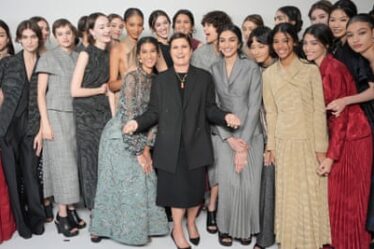
Are the days of free-flowing cash for start-ups finally over?
After more than a decade of investors pouring money into seemingly any new company, profitable or not, many now look to be pulling back as interest rates rise to curb surging inflation and the global economy hits all kinds of turbulence.
Tech companies have already started to feel the pinch. Klarna, the buy-now-pay-later player that became Europe’s most valuable start-up, has slashed its valuation as it seeks new funds, according to Bloomberg. Thrasio, an aggregator that buys up third-party sellers on Amazon, was unable to go public as expected and has been forced to cut staff and scale back new projects, the Wall Street Journal reported.
“If your plan is to raise money in the next 6-12 months, you might be raising at the peak of the downturn,” Y Combinator, the well-known Silicon Valley tech incubator, said in a letter to founders obtained by Tech Crunch. “Remember that your chances of success are extremely low even if your company is doing well. We recommend you change your plan.”
Sequoia Capital offered founders a similarly gloomy outlook, calling it a “crucible moment” in a presentation seen by The Information.
For fashion-tech businesses, or really most fashion start-ups, the prognosis doesn’t look great. How worried should they be?
The answer likely depends on what they do, and whether they’re “default alive” or “default dead.”
The concepts come from a 2015 essay written by Paul Graham, Y Combinator’s founder.
“When I talk to a start-up that’s been operating for more than 8 or 9 months, the first thing I want to know is almost always the same,” he wrote. “Assuming their expenses remain constant and their revenue growth is what it has been over the last several months, do they make it to profitability on the money they have left? Or to put it more dramatically, by default do they live or die?”
For years, countless default-dead companies have been able to survive because of the abundant funding available. Y Combinator suggested in its recent letter to founders that those without the runway to “reach default alive” raise money if they can. But it’s a task that looks set to get harder.
Citing PitchBook data, the Wall Street Journal noted that, after reaching a record high in the fourth quarter last year, venture capital investments have begun to fall. While PitchBook’s own research has found that deal sizes and valuations in the US and Europe hadn’t yet followed suit in the period, that’s likely because it will take a few quarters before the price drops seen lately in public markets are reflected in private ones, it said in a research note.
“Venture capital (VC) is particularly susceptible to repricing given its high degree of exposure to young companies that will require significant growth to reach profitability as well as the surge in valuations over the past few years,” it said.
What does that mean for fashion?
It’s impossible to know exactly where investors will place all their bets, but in 2021, among those attracting funds in the fashion-tech space were companies that better connect sellers and buyers online, solve operational pain points and make shopping more engaging. Investors also started doing their homework on metaverse and web3-related ventures to see where to put their money. If that activity is any indication, it suggests technology solutions could draw more interest than yet another unprofitable direct-to-consumer brand.
Recent deals seem to point in that direction. Bold Metrics, an AI-powered fit and sizing company, today announced an $8 million round. ZMO.ai, which creates AI-generated models that can be used for e-commerce, also recently raised $8 million. The shoppable-video company Firework raised $150 million, with SoftBank leading.
All fashion start-ups, however, should probably expect investors to become a lot pickier in the months ahead. Many will likely need to cut expenses, pause hiring and make their balance sheets look as healthy as possible.
Buy-now-pay-later options won’t vanish from checkout pages because Klarna had a down round, just as other changes brought by the past decade’s tech boom won’t be rolled back. Funding won’t dry up entirely either. There will still be those willing to invest in companies they believe in. Andreessen Horowitz, for example, just announced a new $4.5 billion crypto fund. And many venture capitalists believe downturns are when great companies are made.
But businesses that are already self-sustaining are the ones more likely to both survive and find backers to help them grow. The rest may want to act now to get as close to that place as possible, or they may find themselves struggling to find the funds to keep going.
To read more from BoF’s Technology Correspondent Marc Bain, sign up for our Weekly Technology Briefing out every Thursday, exploring how blockchain, AI, 3D, extended reality and other innovations will change how fashion businesses design, manufacture, distribute, market, sell and resell their products.



